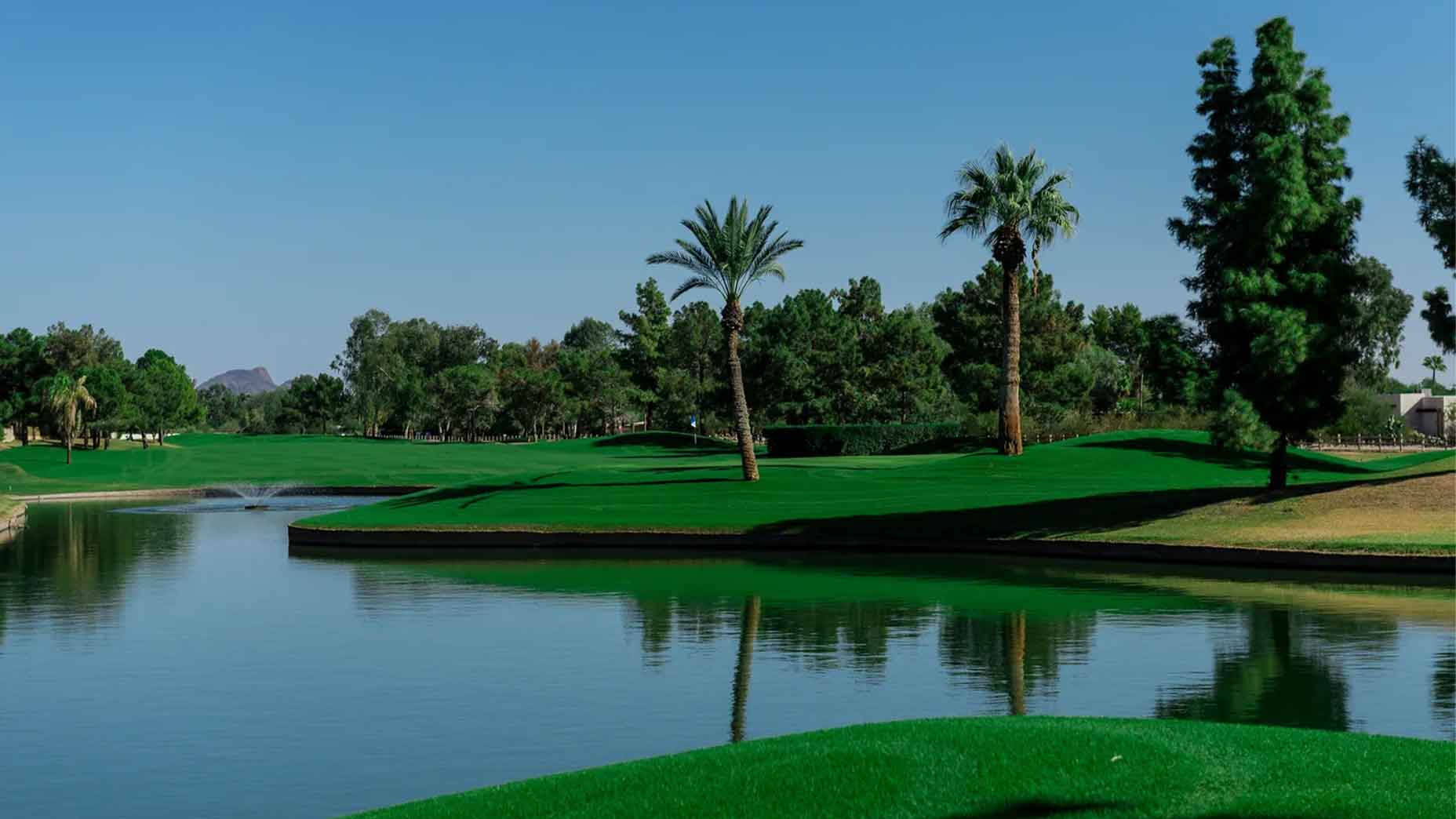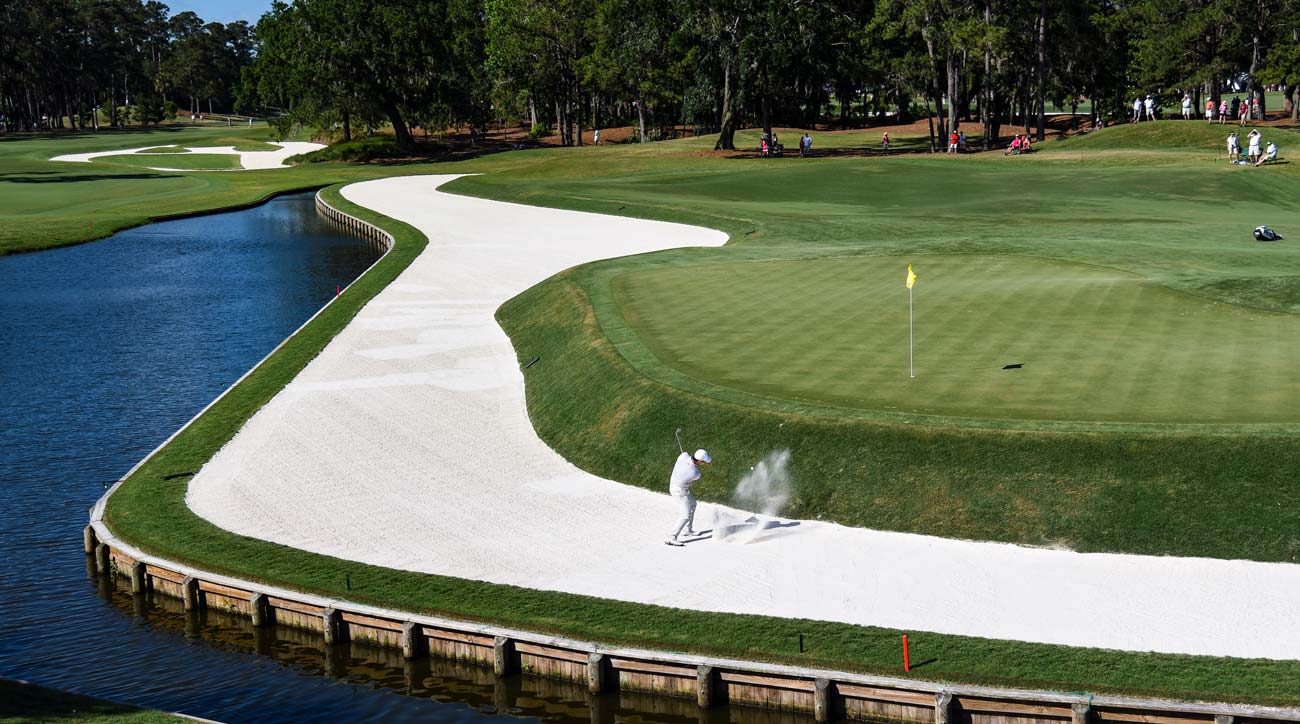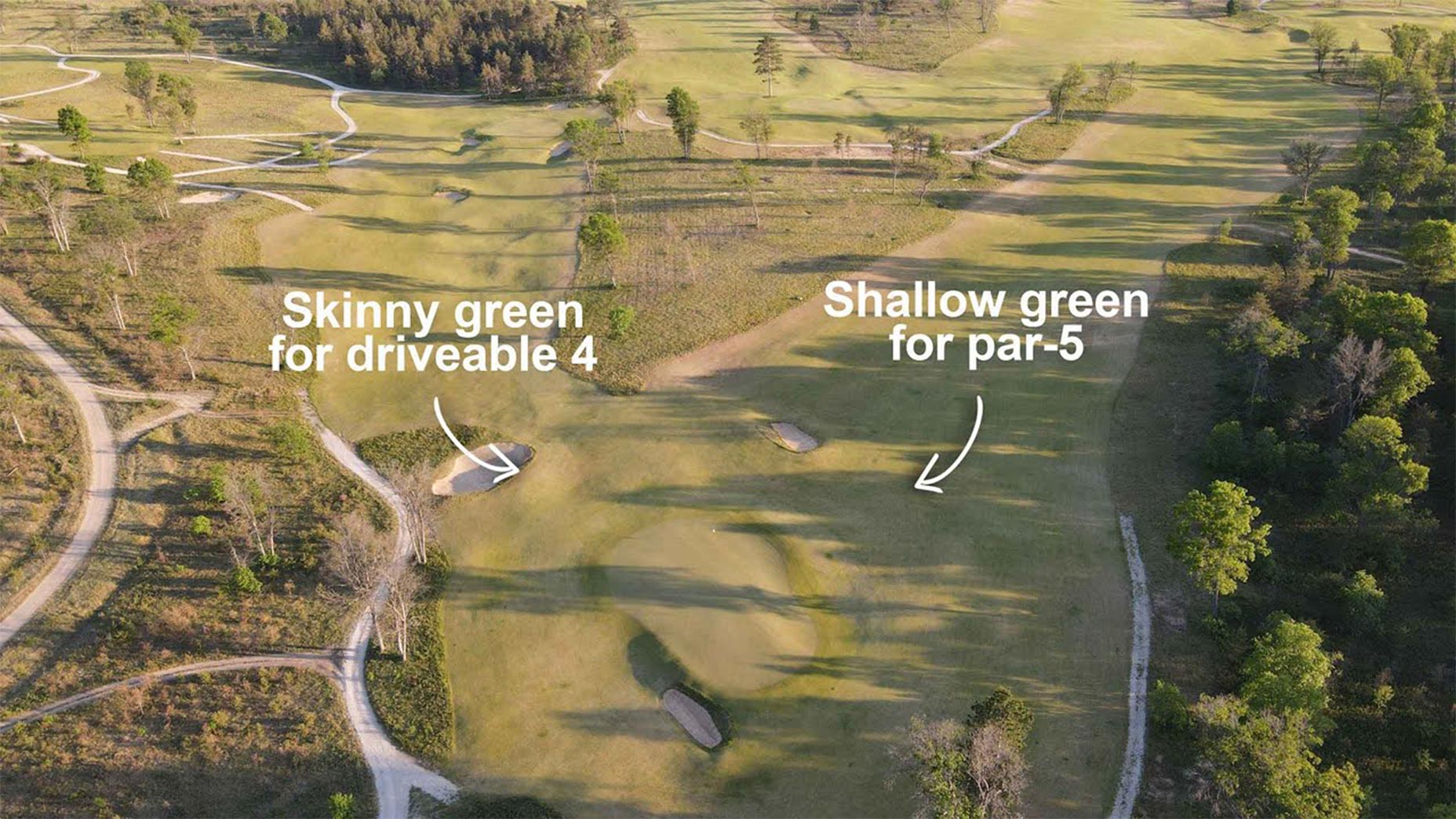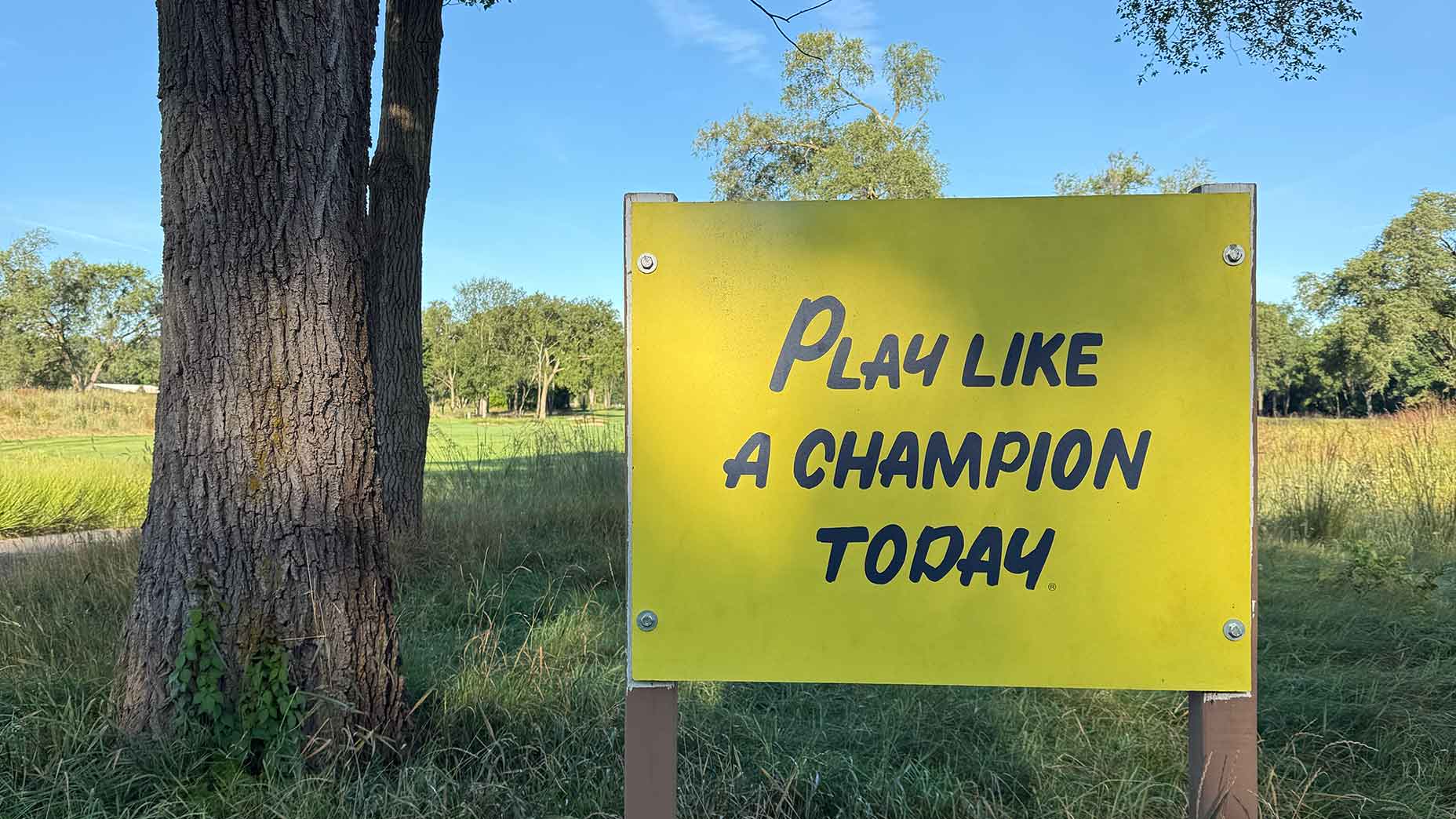 My favorite course of the year offers an incredible summer deal
My favorite course of the year offers an incredible summer deal
Course Rater Confidential: What are the 3 best TPC courses?

GOLF’s Top 100 course panelists are among the most respected and well-traveled course evaluators in the game. They’re also keen to share their opinions. In this GOLF.com series, we’ll unlock their unvarnished views on all questions course-related. The goal is not only to entertain you but also to give you a better understanding of how to understand and appreciate golf course architecture. You can see GOLF’s latest Top 100 Courses in the World ranking here, and meet all of our Top 100 panelists here.
This week’s Waste Management Open takes the PGA Tour to TPC Scottsdale, a venue best known for its atmosphere. But let’s talk architecture. In your opinion, what are the three best TPC layouts, and why?
Steve Lapper: Panelist since 2009; has played 84 of the World Top 100:
TPC Sawgrass — This is an obvious choice. It is certainly one of Pete Dye’s masterpieces, and its stadium design, while penal and unrelenting, yields an undeniable pleasure. It’s always fun to take on the holes we see the Tour play every year. No club is spared and you’ll need every shot you have to score here.
TPC Old White — TPC Old White has considerable architectural chops and pedigree. It was originally designed by Charles Blair Macdonald, arguably the father of American golf, and has a significant Seth Raynor contribution. After a devastating flood in 2016, and a renovation by Keith Foster, it has only gotten better. Most all the template holes are there. So few of these early classics are public. This one is. And the Greenbrier folks keep it meticulously maintained. It’s a joy to play.
TPC Harding Park — A well-conditioned municipal with elite private courses next door, is a brawny track that has found its calling as a TPC site for big PGA Tour events. Designed by Willie Watson (Olympic Club) and Sam Whiting, its routing alongside Lake Merced yields few truly memorable holes, but it does provide a cool Northern California vibe for the public player.
Sally Markiewicz: Panelist since 2013; has played 84 of the World Top 100:
TPC Sawgrass — This is an incredible layout and is a true test with all its length. The holes are all very different and it has three great finishing holes. The 17th is my favorite. All you want to do is put that ball on the island green, but all you can think about is all that water. That’s Sawgrass for you. It’s a course that keeps you thinking.
TPC Harding Park — A major renovation made it a PGA-caliber challenge while preserving its original beauty. The greens are much improved and you still get to enjoy the beautiful lake and cypress trees.
TPC Scottsdale — It’s a good test of golf due to all the bunkers and desert conditions. The par-3 16th is a hole you’ll never forget, and not just because you’ve played. It’s emblazoned in your memory from the wild scenes you’ve seen on TV.
Josh Sens: Panelist since 2013; has played 62 of the World Top 100:
TPC Sawgrass — It’s worth noting that TPC stands for Tournament Players Course. These designs are intended to hold tournaments, not necessarily to wow your local architecture snob. Sawgrass is one of the rare TPCs that does both. Pete Dye was tasked with turning a flat swatch of Florida swampland into a stout challenge for the world’s best, and he did just that. But this is not a boring, rear-back-and-bash-it brute. “Shot value” is a term that gets tossed around so much in golf nerd conversations these days that I’m not always sure what people mean by it. What you get at Sawgrass is great shot variety. The island-green 17th is the most widely recognized hole. But I wouldn’t call it the most interesting, as there really aren’t that many ways to approach it. In that regard, it pales compared to others, like the short par-4 4th, say, or the curling par-5 9th, both of which better represent the kind of strategic choices you get throughout the course. The Tour pros often say that Sawgrass favors no one. That’s not quite true. If you don’t drive it straight, forget it. But the fact that such a wide range of players have won here — everyone from Fred Funk to Fred Couples — speaks to the kind of creativity it allows for. That holds for us mortal, too, provided we choose the right tees.
TPC Harding Park —I’m biased. Some 30 years ago, I used to camp out in my car on weekends here, headlights on, waiting in line with all the other San Francisco golf addicts for a crack at the area’s best muni. It’s a sentimental favorite. But it’s also far from shabby. I agree with Steve Lapper above. There aren’t a lot of holes that brand themselves into your memory. But the overall routing is cool, with the front nine folded inside the back nine. And the grandeur of the cypress trees creates a vivid atmosphere. Also, the closing stretch along Lake Merced is, to my mind, every bit as good as the closing stretch of the Olympic Club’s Lake Course, just across the way.
TPC Summerlin — I wouldn’t call this a miraculous design. It’s desert golf in Vegas. But if you can set aside your inner design snob, it’s good, clean fun. Plus it’s set in the ego-boosting thin air of Nevada and highlighted by a couple of entertaining risk-reward par-5s. I have little doubt that I’d like the Greenbrier more, but since I haven’t played that one, I cannot praise it. A good part of the draw of playing certain TPCs is playing a course you’ve seen the pros take on. This qualifies. It’s also where Tiger won his first event as a pro, so it’s got that going for it, which is nice.
ADVERTISEMENT
Brian Curley: Panelist since 2011; has played 65 of the World Top 100:
First, let’s be clear: TPCs are first and foremost there to handle large crowds and the logistics of tournament golf, not provide/evoke intimate designs nurtured into the natural surrounds. Backdrops are heaps of people, not landscapes and open views. TPCs are the Greyhound buses of golf courses built to accommodate crowds, they are not Ferraris that have style and performance for the driver and passenger weaving through the landscape. So to expect outstanding architecture from that directive is a tall order, but some can pull it off.
TPC Sawgrass — I love the course and the design and look forward every year to the finish where a player can come from nowhere to win, or stumble at the final stretch. Harsh and exacting, there is a thin line between a great shot and a watery grave. It certainly gets into the heads of players like no other course. In regards to the above statement about crowds, this course looks great year round as the tall pines tower above the spectator mounding . Bunters to bombers have won here and it seems to favor no certain player, unlike many newer TPCs that bombers dominate. This course will stand the test of time and is easily the best of the bunch.
TPC Scottsdale — Architecturally it has issues. Horrid opening holes through a tight corridor of homes, a general lack of significant memorability and a final stretch that is neither great nor penal enough. But, if the ask is to handle a large event , this course does it in epic proportions. I have been going for may years and miss the old days with fewer structures. But 200,000-plus people seem to meander through the course without too many choke points or issues and the event is a testament to the fine things that the Tour does for the community and all its charities. Again, this is tournament golf, not a stroll through Pine Valley.
TPC Harding Park — It has all the potential of the other area courses that benefit from being a private club, maybe lacks distinct holes and memorability, but is a great nod to what a public golf can do for tournament play.
Hal Phillips: Panelist since 1997; has played 71 of the World Top 100:
TPC Sawgrass — Funny how this track remains so far away the class of this genre, some 35 years on. The land in Ponte Vedra is completely unremarkable. Whatever formula the TPC pioneered has been followed dozens of times; you’d think something else would come close, but this place continues to stand alone. Two potential explanations: First, I can’t think of many TPCs (certainly very few courses outside renovated Seth Raynor layouts) where the edges are so hard, so prominent and so crucial to so many risk/reward scenarios. The difference between success and failure is so stark here — so plainly evident, too. Maybe it’s the sumptuous landscaping (certainly more evident on TV, in the spring) but even in person the holes here frame up very nicely, better than most any Florida course I can think of, with lovely color contrasts.
TPC River Highlands — The pros routinely go low here, but I’ve always felt the design was both aesthetically pleasing and compelling in the tournament context. Pete Dye (then Bobby Weed) did an extraordinary job routing this course, expertly leveraging a pretty cool piece of terrain. Not all TPCs are built on such good ground, to be honest. Not many are built in the wooden Northeast milieu, either. River Highlands benefits from both facts when compared to other TPCs, in my honest opinion. Many people don’t realize this course replaced an unremarkable mid-century design called Edgewood CC. Dye/Weed reversed some original holes, commandeered only bits and pieces if others, routed all-new ones and just plain used the land so much better. That single pond on the back nine, the one that strategically affects five different holes including 15, 16 and 17 (on the drive and approach?). Pretty genius. On the old routing, that same hazard affected just two holes.
(tie) TPC Old White/TPC Boston — I played the Old White before it joined the TPC network (2011) and, I have to be honest, just slapping TPC on the scorecard and comparing it to all these modern designs seems pretty weird to me. But it’s an undeniably cool design with the Macdonald/Raynor templates — and I hear the post-flood work has been really good. It certainly brings to the table vintage cred no other TPC property can match. But it seems to me on some level that TPCs should be purpose-built, which leads me to include TPC Boston (and not Harding Park). The original Palmer design here was good, especially the routing, which moves pretty effortlessly through three distinct, remote environments (none of which include housing). Gil Hanse & Co. have made it that much better, showing what attention to details like grassing plans and bunker presentation can do.
To receive GOLF’s all-new newsletters, subscribe for free here.
ADVERTISEMENT







